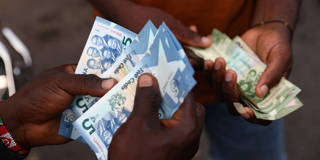While US regulators rush to protect the depositors of failed domestic banks, many others around the world have been left to deal with the effects of the US Federal Reserve’s interest-rate hikes on their own. As in past systemic crises, this one is revealing major flaws in the international financial system.
WASHINGTON, DC – Over the last few months, a G7 economy (the United Kingdom), a midsize US bank (Silicon Valley Bank), a small African economy (Ghana), a lower-middle-income South Asian economy (Pakistan), and the fastest-growing global services sector (technology) have all faced short-term cash constraints. Monetary-policy tightening in the United States – where the Federal Reserve raised interest rates by 475 basis points in the space of a year – has produced knock-on effects around the world. But the stark disparities in how these effects are being treated speak volumes about current global financial arrangements.

WASHINGTON, DC – Over the last few months, a G7 economy (the United Kingdom), a midsize US bank (Silicon Valley Bank), a small African economy (Ghana), a lower-middle-income South Asian economy (Pakistan), and the fastest-growing global services sector (technology) have all faced short-term cash constraints. Monetary-policy tightening in the United States – where the Federal Reserve raised interest rates by 475 basis points in the space of a year – has produced knock-on effects around the world. But the stark disparities in how these effects are being treated speak volumes about current global financial arrangements.